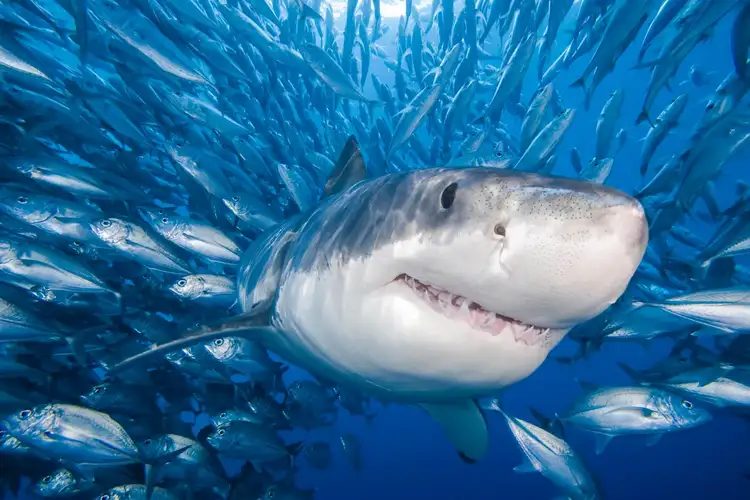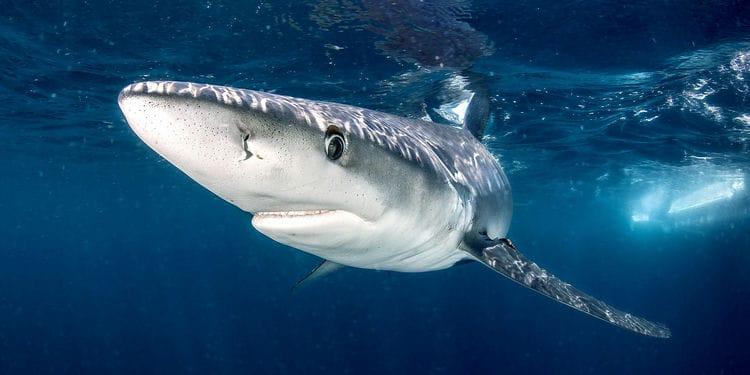MOVIE & LIFESTYLE NEWS
Discovering Where Sharks Are Found: A Journey Through Shark Habitats
Sharks are one of the most fascinating creatures in the ocean, captivating our imaginations with their fearsome reputation and enigmatic behavior. But have you ever wondered where sharks are found? In this article, AlibayTrendy Store will explore where sharks are found by diving into the diverse habitats they inhabit, uncovering some of the most common species in each region.
Where Sharks Are Found? Coastal Waters
Coastal waters are among the most common habitats for sharks, largely due to the abundant food sources and conducive breeding conditions. In these zones, sharks prey on a variety of fish, crustaceans, and other marine life, making the coastal environment a bustling ecosystem. The warm, shallow waters offer ideal temperatures for many shark species to thrive and reproduce.

Popular locations for shark sightings in coastal regions include the eastern coast of the United States, where species like the Bull Shark and the Hammerhead Shark are frequently observed. The Gulf of Mexico, known for its rich biodiversity, is another hotspot for shark activity.
Australia’s coastal waters, including those around the Great Barrier Reef, are renowned for Great White Shark encounters, attracting tourists and researchers alike. These areas serve as crucial habitats where sharks feed, grow, and reproduce, supporting both the local ecosystem and the broader marine food chain.
Coral Reefs
Coral reefs are dazzling underwater landscapes filled with a rich variety of marine organisms, from colorful corals to numerous fish species. Among the many inhabitants of these vibrant ecosystems are several types of sharks, which play a key role in maintaining the health of the reef. Coral reefs offer a complex structure where sharks can find shelter, hunt, and even rest.

The Great Barrier Reef in Australia is one of the most famous coral reef systems, home to a variety of shark species like the Reef Shark, Lemon Shark, and Nurse Shark. These species often patrol the reef’s edges, using the coral structure to their advantage while hunting.
In the Coral Triangle, located in Southeast Asia, the high diversity of marine life attracts species like the Blacktip Reef Shark and the Whitetip Reef Shark. The Caribbean Sea, another coral-rich region, also hosts several shark species, contributing to its reputation as a prime diving destination. These coral reef habitats not only provide a sanctuary for sharks but also attract visitors from around the world, drawn by the chance to witness these majestic creatures in their natural environment.
Open Ocean
The open ocean, also known as the pelagic zone, is a vast and seemingly endless expanse where some of the largest and most nomadic shark species reside. This deep blue region offers sharks ample room to roam, enabling them to travel immense distances in their search for food, mates, and safe breeding grounds.

Unlike coastal sharks, which are often confined to specific territories, pelagic sharks exhibit a high degree of mobility, crossing oceans and continents in their life cycle.
Species such as the Blue Shark, Mako Shark, and Oceanic Whitetip Shark are quintessential inhabitants of the open ocean. The Blue Shark, with its sleek, streamlined body, is known for its long migrations and fast swimming capabilities.
The Mako Shark, renowned for its speed and agility, often engages in spectacular leaps out of the water. The Oceanic Whitetip Shark, distinguished by its rounded white-tipped fins, is a resilient species that adapts to various oceanic conditions. These sharks tend to stay away from coastal areas, preferring the solitude and expanse of the open sea, where they can follow ocean currents and hunt for prey, such as smaller fish, squid, and even sea birds.
Deep Sea
The deep sea is a realm of darkness, extreme pressure, and frigid temperatures, offering a stark contrast to the sunlit surface waters. Despite these harsh conditions, a unique group of sharks has evolved to thrive in the deep sea. These deep-sea sharks possess distinctive physical characteristics that help them navigate and survive in an environment where light is scarce and the pressure is intense.

The Goblin Shark is a particularly unusual deep-sea species, recognized for its elongated, protruding snout and jaw structure that can extend forward to capture prey. The Sixgill Shark, as its name suggests, has six gill slits, unlike the typical five seen in most sharks.
This adaptation, along with its large size, helps it survive in the deep-sea ecosystem. The Frilled Shark, with its eel-like body and frilled gills, is another intriguing deep-sea resident, known for its primitive features and rare appearances at the ocean’s surface.
Deep-sea sharks often remain hidden from human view, dwelling in the ocean’s deepest trenches and abyssal plains. They have evolved to rely on senses other than sight, using enhanced smell and electroreception to locate prey in the dark. These sharks rarely interact with humans, contributing to their mystique and allure among marine biologists and ocean enthusiasts.
Polar Regions
It might seem surprising, but even in the harshest and coldest parts of the planet, sharks find a way to thrive. The polar regions, with their icy waters and extreme weather conditions, are home to a unique set of shark species that have adapted to these severe environments. These sharks are marvels of evolution, demonstrating the resilience and versatility of the species.

One of the most notable sharks in this region is the Greenland Shark, a creature renowned for its extraordinary longevity. Known to live for centuries, the Greenland Shark is one of the longest-living vertebrates on Earth.
These sharks inhabit the icy waters of the Arctic, where temperatures often hover around freezing, and daylight can be scarce during long winter months. Despite these challenging conditions, the Greenland Shark has adapted with unique physiological traits, allowing it to navigate through frigid waters and hunt effectively in near-darkness.
Greenland Sharks are often found in deep waters, slowly cruising through the cold currents in search of prey. Their diet is quite varied, including fish, squid, and even smaller marine mammals. What sets these sharks apart from many other species is their extremely slow metabolism, which is likely an adaptation to the cold environment. This slow pace of life contributes to their long lifespan, with some estimates suggesting that Greenland Sharks can live for over 400 years.
The presence of sharks in polar regions highlights the incredible diversity and adaptability of these predators. It also underscores the interconnectedness of marine ecosystems, where even the coldest and most remote areas play a role in the broader oceanic environment.
As researchers continue to study these polar sharks, they gain a deeper understanding of how life endures in some of the most extreme places on the planet. This knowledge is crucial for conservation efforts and for appreciating the full range of habitats where sharks are found.
Sharks are found in a diverse range of marine environments, showcasing their incredible adaptability from coastal areas to the open ocean and even the icy waters of the polar regions. Whether you’re a fan of these magnificent predators or simply curious about their habitats, it’s clear that sharks play a vital role in maintaining the balance of marine ecosystems.
If you’re fascinated by sharks and want to express your love for these awe-inspiring creatures, why not wear it? Check out the stylish Shark Hawaiian Shirts at AlibayTrendy Store! With vibrant designs and high-quality fabric, you’ll make a bold statement wherever you go. Dive into the latest trends and embrace the shark spirit by visiting AlibayTrendy Store today!
